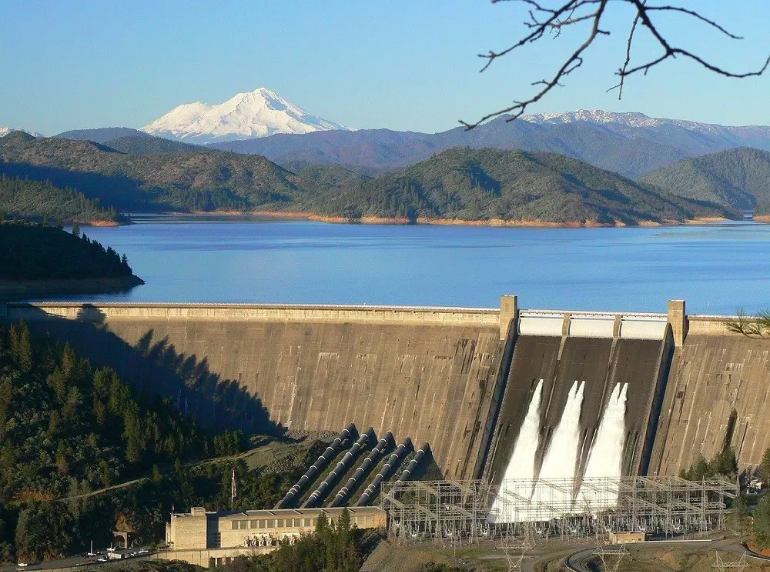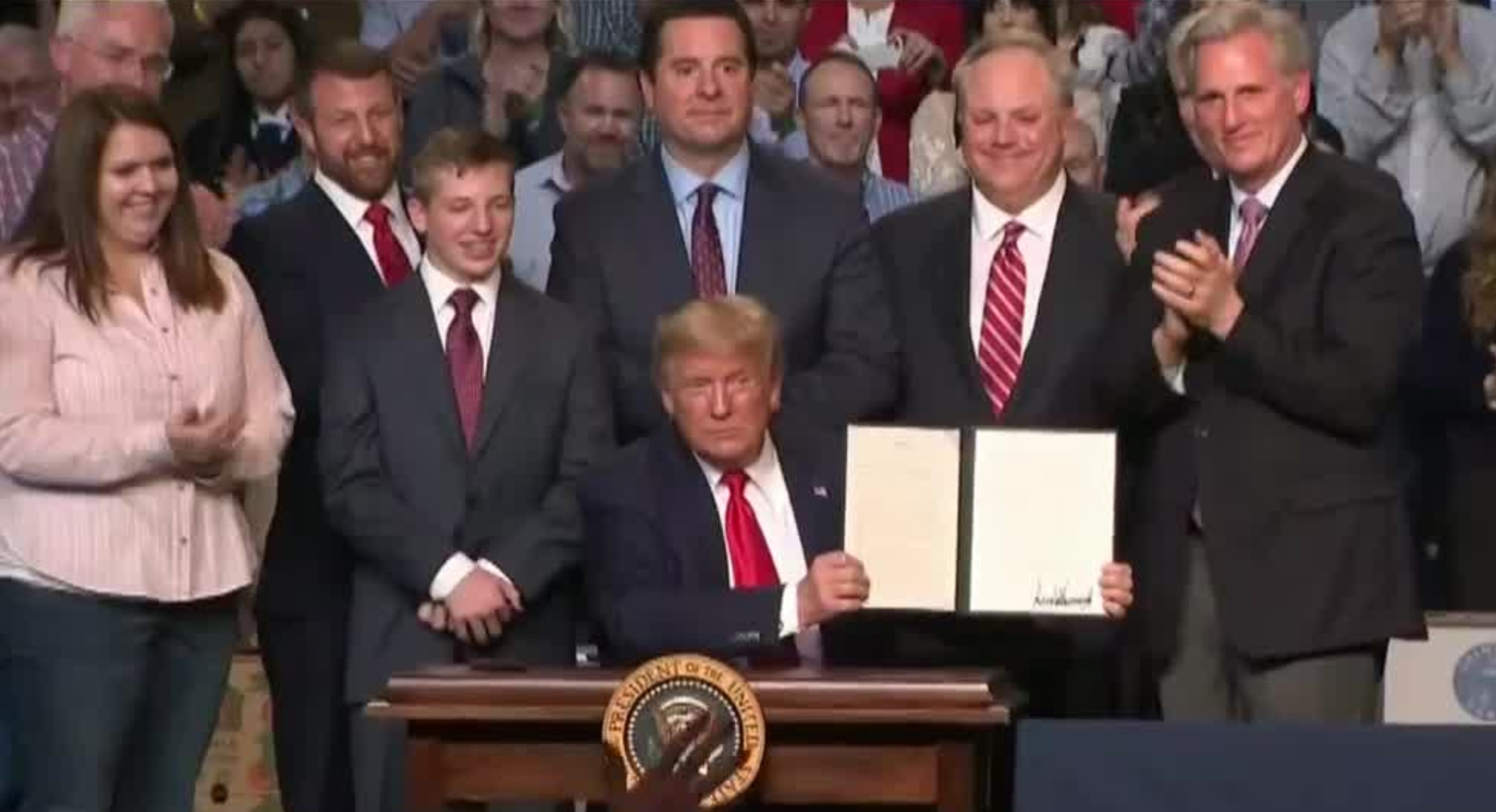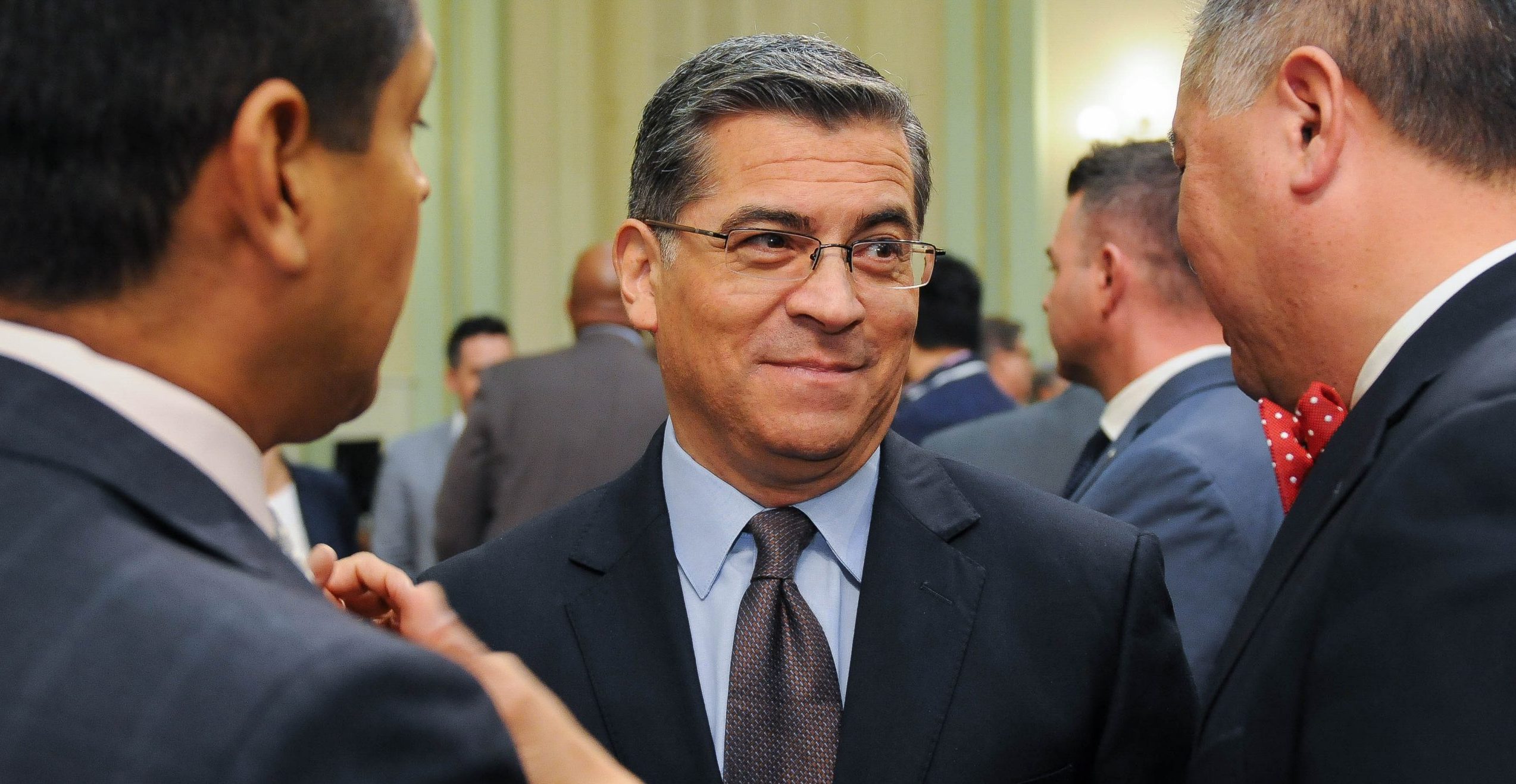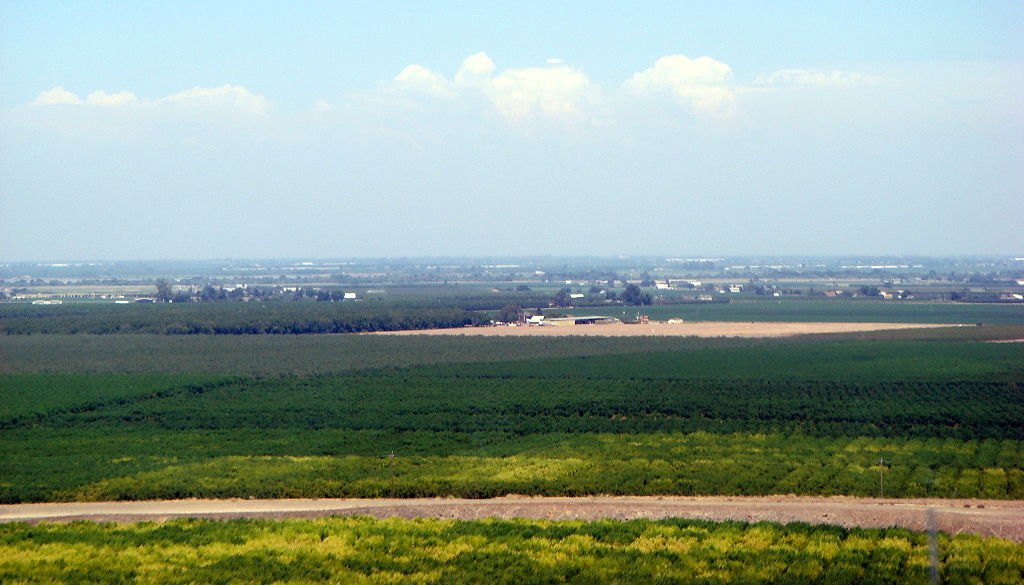
Shasta Dam (USBR)
California Democrats Play Water War Games To Get Even With President Trump
CG Water Series: Where is California’s water going?
By Katy Grimes, August 13, 2019 8:15 am
Playing water war games with the people’s water is getting old in California. The winter of 2019 brought 200 percent of average rains and snow pack. Yet the state is still holding back on water to farmers, and residents will be rationed starting next year.
Under President Donald Trump’s administration, radical EPA regulations have been thoroughly reviewed, relaxed, and some overturned. However, the Legislature and Gov. Gavin Newsom are taking their own shot over Trump’s bow with Senate Bill 1, the California Environmental, Public Health, and Workers Defense Act of 2019. “This bill establishes specified minimum federal environmental, public health, and labor standards as state baselines in the event the Congress or President repeals or weakens corresponding federal standards, and prohibits the corresponding California standards from falling below those baselines. In the event that new federal standards fall below the baseline, this bill allows private citizens to enforce state standards,” bill analysis says.
What the bill would really do is send billions of gallons of water out to the Pacific Ocean ostensibly to save more fish.
Federal and State Water
California Globe spoke last week with Paul Souza, Pacific Southwest Regional Fish and Wildlife Director, about updating the 2008 Biological Opinions on the Bureau of Reclamation’s Long Term Operations of the Central Valley Project and State Water Project. The Fish and Wildlife Service and the National Marine Fisheries Service, known as NOAA, are currently undertaking a second independent scientific peer review of the analyses in their draft Biological Opinions. Both agencies previously carried out an independent scientific peer review of an earlier draft of their analyses this spring. Both agencies expect to complete the Biological Opinions by August 30th.
But first, some background:
The Bureau of Reclamation and California Department of Water Resources currently operate under a biological opinion Fish and Wildlife issued on December 15, 2008, and a BiOp National Marine Fisheries Service issued on June 4, 2009, for long-term operation of the Central Valley Project and State Water Project. This is what is being updated.
· On August 2, 2016, the U.S. Bureau of Reclamation, the lead federal agency, and the California Department of Water Resources, the applicant, jointly requested the reinitiation of Endangered Species Act consultation on the coordinated long-term operation of the Central Valley Project and State Water Project.
· In October 2018, President Trump signed a memorandum on “Promoting the Reliable Supply and Delivery of Water in the West” which included guidance and direction on the process. (DOI news release) In the President’s memorandum, he says “Decades of uncoordinated, piecemeal regulatory actions have diminished the ability of our Federal infrastructure, however, to deliver water and power in an efficient, cost‑effective way,” also warning that unless addressed right now, “fragmented policies and fragmented regulation of water infrastructure will continue to produce inefficiencies, unnecessary burdens, and conflict among the Federal Government, States, tribes, and local public agencies that deliver water to their citizenry.”
· On January 31, 2019, Reclamation transmitted their Biological Assessment to the Service.
· On July 11, 2019, the Bureau of Reclamation released a draft environmental impact statement analyzing potential effects associated with long-term water operations for the Central Valley Project and State Water Project. (Reclamation news release)
Enough government-speak. The conversation with Paul Souza largely stayed in the Fish and Wildlife camp, discussing water deliveries for fish populations, and concerns for salmon runs and Delta Smelt. Souza said the second peer review of the biological assessment update was currently taking place and would be out within the month. “We are taking the time to get it right,” Souza said. While Souza’s focus is on important water for fish populations, California has a serious government-created water shortage for agriculture and humans in the Central Valley.
More back story: The Obama administration weaponized NOAA, which according to some federal government insiders, is a bunch of environmental zealots within the Department of Commerce, trying to screw up water plans that benefit humans.
Shasta Dam
In a recent meeting with Rep. Tom McClintock (R-CA), we discussed water storage in California. McClintock explained that the most expensive way to produce water for human and agriculture is desalination at the cost of $2,300 per acre-foot. Water recycling costs $1,500. Importing water costs $925. Groundwater storage costs $737. “The cheapest source of water is good, old-fashioned surface storage – dams and reservoirs – at $600 per acre-foot,” McClintock said. “Surface water storage gives us nearly four times as much water for the dollar as desalination.”
Thus, what makes the most sense for additional water storage in California is to raise the Shasta Dam.
“Everyone agrees we need to produce more water infrastructure. The question is, for the same price, would it be better to get one gallon or four gallons?” McClintock said in opening remarks during the April House Natural Resources Committee Water, Oceans and Wildlife Subcommittee hearing on “The State of Western Water Infrastructure and Innovation.” McClintock is the ranking member.
“Instead of storing California’s abundant rain-fall before it reaches the ocean, they prefer to spend four times the cost of storage to reclaim the water AFTER it has been needlessly lost to the sea,” McClintock said.
“The last generation understood this, and it built the dams and aqueducts that we still rely upon today. They did so through the beneficiary pays principle: the state and federal governments advanced money for construction that was then repaid by the users of the water and power produced by the projects.”
“In the 1970s, we abandoned these projects – sometimes in mid-construction.”
When McClintock and I spoke, he said the Shasta Dam was designed to be built to 800 feet but currently stands at only 600 feet. “The extra 200 feet would produce nine million acre-feet of additional storage – nearly doubling the water we could store on the Sacramento system. But a project to raise the dam just 18 feet – that would store an additional 630,000 acre-feet – has been stalled for decades by endless environmental reviews.”
“So I now pose the question again: abundance or shortage?” McClintock said at the hearing. “We could spend $1.4 billion to raise Shasta Dam by 18-feet or spend $1 billion for another Carlsbad desalination plant. Shasta would yield as much as 630,000 acre-feet each year; Carlsbad 56,000 acre-feet. And consider this: when water is drawn out of Shasta, it generates enough electricity to supply about 710,000 homes. When water is drawn out of Carlsbad, it consumes ¼ megawatt for every acre-foot of water. In other words, Carlsbad consumes enough electricity to power 250 homes in order to produce enough water for one home.”
“Droughts are natures fault; water shortages are our fault,” McClintock said. “That’s the choice we made 40 years ago when we discouraged construction of new dams. And we now have to ask ourselves whether we really want to live in an era of unnecessary self-imposed water and power scarcity or restore abundance as the object of our water and power policy.”
In 2017, President Trump signed an Executive Order directing the Environmental Protection Agency and the U.S. Army Corps of Engineers to review the Obama administration’s “Waters of the United States” rules, which defined all bodies of water that fall under U.S. federal jurisdiction. Trump’s plan is “paving the way for the elimination” of the rule.
In 2018, the U.S. Environmental Protection Agency and the Department of the Army, proposed a clear, understandable, and implementable definition of “waters of the United States” that clarifies federal authority under the Clean Water Act. Unlike the Obama administration’s 2015 proposal, the new proposed rule contains a straightforward definition that would result in significant cost savings, protect the nation’s navigable waters, help sustain economic growth, and reduce barriers to business development.
As for President Trump’s memorandum on Western Water, House Republicans say “with this executive action, there is a strict timetable for rewriting the biological opinions that lie at the root of the water crisis. This executive action also prioritizes building critical projects to expand water storage in our state so that we can store more water during wet years for use in dry years.”
Next: Letting water drain out to the Pacific Ocean: How the Democrats in Congress and California continue to screw it up and what can be done for California, and implications of Senate Bill 1.
- California State Auditor: Governor Newsom and 8 Agencies Named ‘High-Risk’ - December 15, 2025
- Newsom and Team Go Lower than Squid Poop on the Bottom of the Ocean - December 12, 2025
- No More ‘Paper or Plastic:’ Bring Your Own Bags to the Store Jan 1 - December 11, 2025





“The winter of 2019 brought 200 percent of average rains and snow pack.” Wow, no. According to the California Department of Water Resources, the state has had 155 inches of precipitation since October in the Northern Sierra, San Joaquin, and Tulare regions; that’s only 28% higher than the long term average of 121 inches. In the Northern Sierra region, precipitation was still only 33% higher than the average. Please try to use real, legit sources for your citations, rather than misinterpreting an article you wrote more than 3 months ago.
The 200% statistic came from the State of California Department of Water Resources (DWR). Their manual survey recorded 106.5 inches of snow depth and a snow water equivalent (SWE) of 51 inches, which is 200 percent of average for the Phillips location outside Sierra-at-Tahoe. Statewide, the Sierra Nevada snowpack is 162 percent of average.
…which was linked in that article.
The final DWR snow report found “The state’s largest six reservoirs currently hold between 96 percent (San Luis) and 128 percent (Melones) of their historical averages for this date. Lake Shasta, California’s largest surface reservoir, is 108 percent of its historical average and sits at 93 percent of capacity.”
That’s odd. I got a total of 228.4″ since October, not 155″. And this source is pretty legit.
http://www.californiadrought.org/drought/current-conditions/
Your figure was only 73.4″ low, an almost 50% error. Please be more careful next time.
My apologies to Kory. The current precip for the three regions is 155.2″. I was looking at the 2016-2017 record rainfall. My bad. I’ll be more careful next time. I promise.
California’s State Water Project started with the 1929 study of “Salinity” in the Delta. The study was generated from the destroyed delta communities and Agriculture in the delta from SALINITY. The Delta has some of the richest soil in the world and salt water was destroying fields, city water sources, and shipping. Ocean water creeped clear into Rio Vista, polluting fresh water sources through out the Delta region. I wish McClintock and the Water Barons of Westlands and Kern Water Agency and take the time to READ DWR Bulletin 28, 1931. It shows the damage from “TOO LITTLE Fresh water” coming from Sacramento & San Joaquin Rivers. (SJ is now at less that 25% ) There was a REASON Shasta Dam was built in 1930s — too keep fresh water in the Delta — to PUSH BACK salt water from the ocean.. Those who do not study the “History-of-California” are doomed to destroy it.
Pat, you are cherry-picking information. McClintock has fought off the Delta Tunnels project which would have allowed getting rid of all the people and farming in the Delta. It would allow tidal influence (salt water) to intrude into the whole Delta necessitating the tunnels being at the very north end of the Delta where the Sacramento River water is still high quality—rather than Southern California water companies having to deal with the expense of salt water.
Calling McClintock, Westlands Water District and Kern Water Agency “Water Barons” makes abundantly clear your position, rather than having an open minded discussion.
To protect smelt from water pumps, government regulators have flushed 1.4 trillion gallons of water into the San Francisco Bay since 2008. That would have been enough to sustain 6.4 million Californians for six years. When is it enough? When do you care about providing water to people in the Central Valley?
NOW can we rally sane Californians to initiate RECALL actions against the Chief Petulant Child of California, Gavin “Greaseball” Newsom???
RECALL GAVIN NEWSOM
https://recallnewsom.us/
Excellent work Katy, as always.
One should also ask, “who are those most affected by the decrees of the Democratic controlled water agencies?
It doesn’t surprise anyone that those who are being squeezed by their rulings are, in the main, Republican voting farmers, and ranchers. And what happens to farmland which is denied water with which to grow crops?
Why it becomes less than worthless, as the state still requires the farmers to pay tax on that land. And still you sheep like California voters keep electing these Bums?